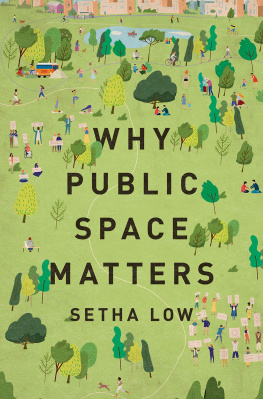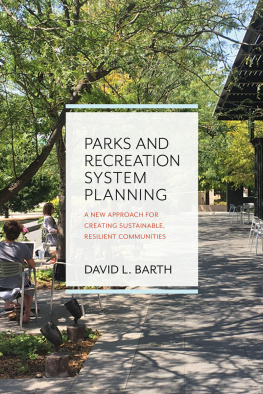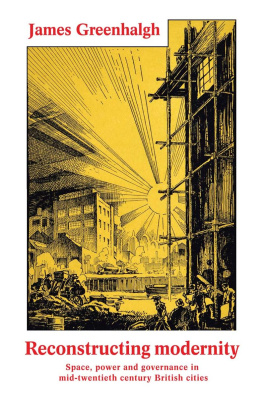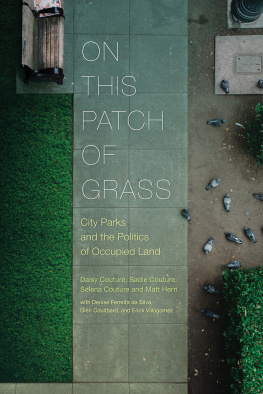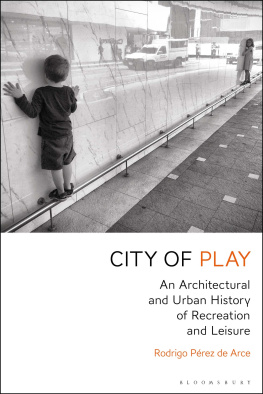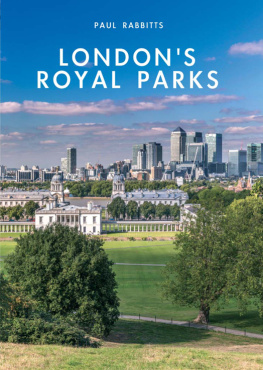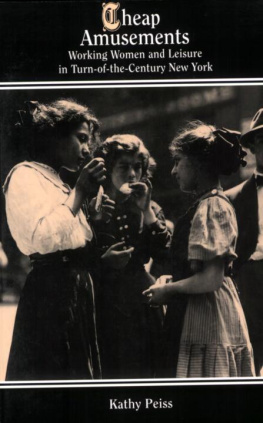
The Greening of the City
Urban parks are a much-loved feature of the city environment. However, our knowledge of the true scale of their impact remains uneven. Much work has been done on their origins and design features, but this book aims to extend this beyond the nineteenth century, examining the fuller flowering of these valuable spaces in the early decades of the twentieth century. Encompassing themes such as social and political usage, parks as employers and the dangers posed by such freely accessible spaces, the book examines a range of parks in cities such as Manchester, Salford, Liverpool, Leeds, Preston, Hull and Cardiff and challenges the prevailing myths about their meaning for their users. This studys timeframe spans almost 100 years of unprecedented social, cultural, political and economic changes and allows for the consideration of the expansion and commercialisation of leisure opportunities for the public. Urban parks played a significant role in thisthe book places parks firmly in the context of the evolving city and examines the importance of green space to the urban citizen during this most fascinating of historical periods.
Carole A. OReilly is Senior Lecturer in Media and Cultural Studies at the University of Salford, Manchester, UK.
Routledge Studies in Cultural History
Families, Values, and the Transfer of Knowledge in Northern Societies, 15002000
Edited by Ulla Aatsinki, Johanna Annola, and Mervi Kaarninen
A History of Euphoria
The Perception and Misperception of Health and Well-Being
Christopher Milnes
The History of the Vespa
An Italian Miracle
Andrea Rapini
Children and Globalization
Multidisciplinary Perspectives
Edited by Hoda Mahmoudi and Steven Mintz
A History of Shaolin
Buddhism, Kung Fu and Identity
Lu Zhouxiang
Heroism as a Global Phenomenon in Contemporary Culture
Edited by Barbara Korte, Simon Wendt and Nicole Falkenhayner
The Body in History, Culture, and the Arts
Edited by Justyna Jajszczok and Aleksandra Musia
The Greening of the City
Urban Parks and Public Leisure, 18401939
Carole A. OReilly
For more information about this series, please visit: www.routledge.com/Routledge-Studies-in-Cultural-History/book-series/SE0367
First published 2019
by Routledge
52 Vanderbilt Avenue, New York, NY 10017
and by Routledge
2 Park Square, Milton Park, Abingdon, Oxon, OX14 4RN
Routledge is an imprint of the Taylor & Francis Group, an informa business
2019 Taylor & Francis
The right of Carole A. OReilly to be identified as author of this work has been asserted in accordance with sections 77 and 78 of the Copyright, Designs and Patents Act 1988.
All rights reserved. No part of this book may be reprinted or reproduced or utilised in any form or by any electronic, mechanical, or other means, now known or hereafter invented, including photocopying and recording, or in any information storage or retrieval system, without permission in writing from the publishers.
Trademark notice: Product or corporate names may be trademarks or registered trademarks, and are used only for identification and explanation without intent to infringe.
Library of Congress Cataloging-in-Publication Data
Names: OReilly, Carole A., author.
Title: The greening of the city : urban parks and public leisure,
18401939 / by Carole A. OReilly.
Description: New York : Routledge, 2019. | Series: Routledge studies
in cultural history ; 73 | Includes bibliographical references and
index.
Identifiers: LCCN 2019019995 (print) | LCCN 2019021614 (ebook) |
ISBN 9781315866840 () | ISBN 9780415720663 (hbk) |
ISBN 9781315866840 (ebk)
Subjects: LCSH: Urban parksGreat BritainHistory19th century. |
Urban parksGreat BritainHistory20th century.
Classification: LCC SB484.G7 (ebook) | LCC SB484.G7 O74 2019
(print) | DDC 363.6/80941dc23
LC record available at https://lccn.loc.gov/2019019995
ISBN: 978-0-415-72066-3 (hbk)
ISBN: 978-1-315-86684-0 (ebk)
Typeset in Sabon
by Apex CoVantage, LLC
To all who have been involved with or who have worked in public parks for the good of others
| HHC | Hull History Centre, Hull |
| LA | Liverpool Archives, Liverpool Central Library |
| LRO | Lancashire Record Office, Preston |
| MA | Manchester Archives, Manchester Central Library |
| SA | Salford Archives, Salford Local History Library |
| WYAS | West Yorkshire Archives Service, Leeds |
Any book such as this relies on the support and contributions of many people. This one is no different. My editor at Taylor and Francis, Max Novick, was a tower of positivity and encouragement, especially when the vicissitudes of life delayed the completion of the manuscript.
My PhD supervisor at Manchester Metropolitan University, Professor Alan Kidd, was a superb advisor, copyreader and general cheerleader for this project. Colleagues at the Directorate of Journalism at the School of Arts and Media, University of Salford, were a constant source of encouragement and inspiration.
There are too many libraries and archives to thank all individually, but I would like to mention Manchester Archives and Local Studies, Salford Archives, West Yorkshire Archives (Leeds), Liverpool Archives and Hull History Centre. Many individuals provided me with assistanceRosie James, Principal Landscape Officer at Cardiff County Council, Gemma Nelson and Kathleen Hamilton of the Theatrical Management Association and Jenifer White at Historic England, all of whom contributed more than they know. The following were generous with their time and advice in sourcing the images: Tim Horning of University of Pennsylvania Archives and Records Center, Duncan McCormick of Salford Local History Library, Jarvis Gurr at Historic England, Julia Skinner at the Francis Frith Collection, Sally Hughes at Leeds Central Library, Louise Hunt at Glamorgan Archives and Colette Heavey at the Friends of Heaton Hall.
Tim Pettigrew invited me to his home and generously opened the Pettigrew family archive for me. Paul Rabbitts shared his expertise of park management and landscape design with me while Dr Katy Layton-Jones offered invaluable advice and support.
Parts of ).
Parts of ).
1
Understanding Urban Parks
Introducing Urban Parks and Public Leisure
Broad-minded, far-seeing public authorities appreciate the fact that the real assets derived from the provision of all pastimes in their parks are not monetary in character, but are the enhanced health and happiness of the community.
(W. Pettigrew, 1937, p. 101)
Public parks are one of the most cherished elements of the British town and city of the twenty-first century. Their impact on public health, social cohesion, education and civic pride is often taken for granted. Yet, we know little about their origins, development and contribution to urban living as a whole. Parks have been host to sporting activity, political demonstrations, criminal behaviour and a wide diversity of civic and local initiatives since their inception in the 1840s. They have much to tell us about how life in the urban environment developed and thrived in spite of overcrowding, poverty and deprivation. They have impacted on our health, leisure opportunities and how we perceive our cities, their inhabitants and ourselves.


